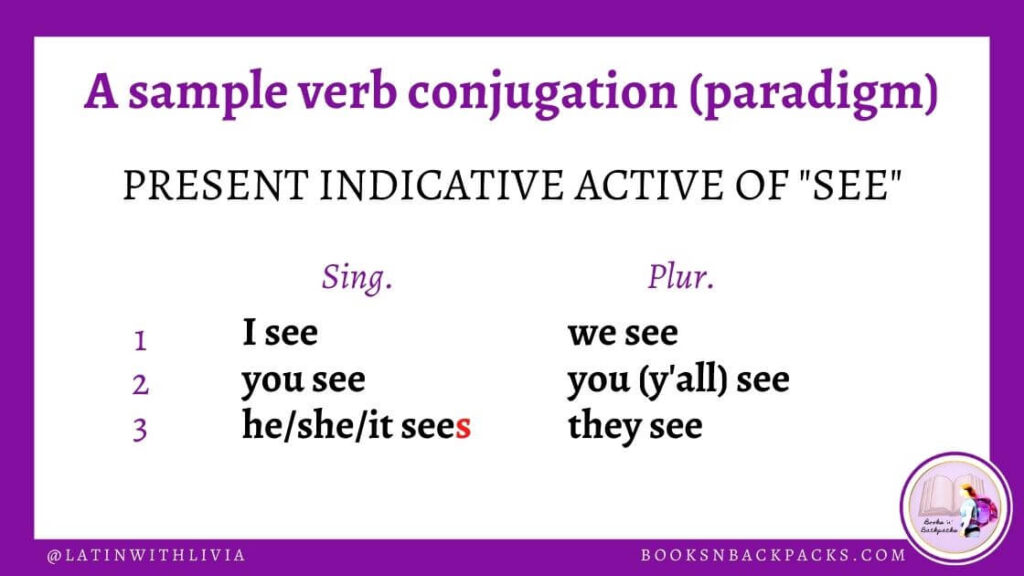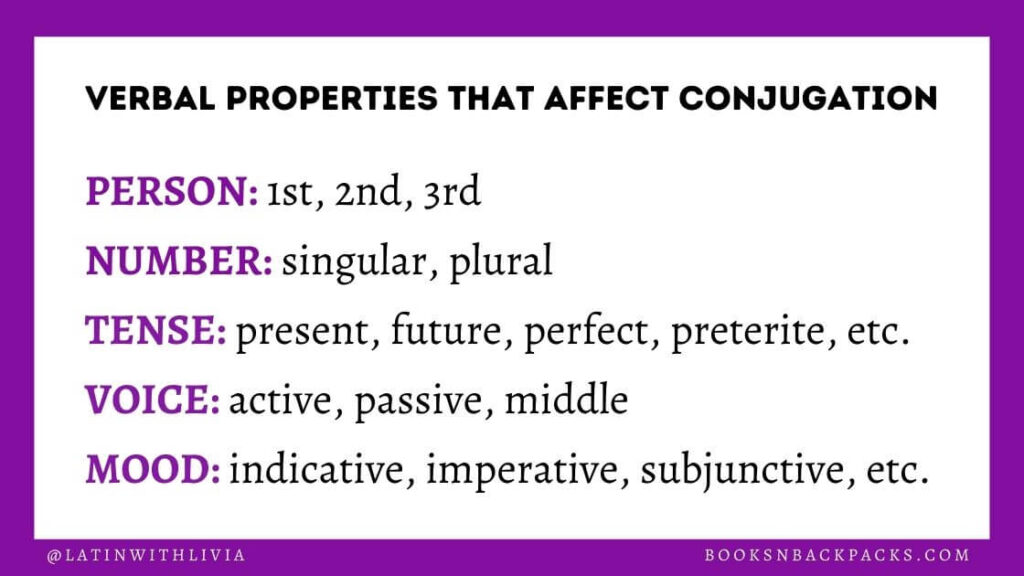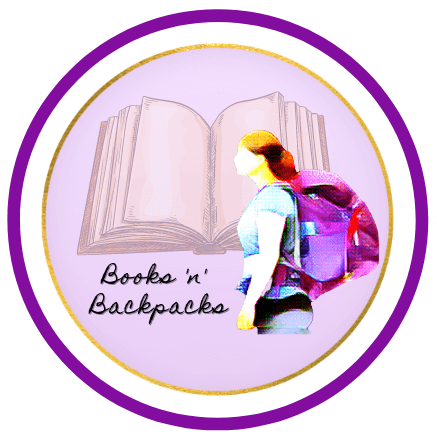What is a Conjugation?: Definitions, Examples, & More
If you are learning a new language, most likely you have to deal with verb conjugations. So, what is a conjugation? In this post, I’ll walk you through everything you need to know.
Verb conjugations are a crucial part of many languages. Through conjugation, verbs express different pieces of information: when the action occurred, who performed it, what the action’s relation with reality is, etc.
This post contains definitions, but also lots of examples of conjugated verbs in English and other languages.

What is a conjugation?
We will start with a bit of etymology. The English noun “conjugation” comes from the Latin coniugātiō. The Latin noun, in turn, is derived from the verb coniugāre.
Coniugāre literally means to “join together” or “yoke together.” Even back in ancient Rome, these terms referred to a grammatical phenomenon.
When we conjugate verbs, we join (or yoke) different endings to the verb stem. This is why the terminology arose. Let’s look at some more concrete definitions and examples of conjugation, and things will become clearer.
To Conjugate
First, the basics. When you conjugate a verb, that means that you change it to express a certain person, number, tense, etc.
Take the verb “shout.” If I want to say that my brother was performing this action yesterday, then I need to change “shout” to reflect the past time of the action.
In this case, I add -ed and say “my brother shouted.” I have conjugated the verb “shout” to give more information about a specific context.
If the action occurs tomorrow, then the verb must be conjugated in a different way. “My brother will shout.” This time, I add the helping verb “will” to express the time of the action.
A conjugated verb is any verb that has been modified to express person, number, tense, voice, and mood. (Don’t worry – we will talk about all these verbal properties below.)
You conjugate verbs constantly in your everyday life; you probably just haven’t stopped to think about it. When you learn a new language, you have to learn new conjugation patterns.
Note that we only conjugate verbs. Nouns, adjectives, and pronouns, on the other hand, are declined. (You can read all about what a declension is here.)
Conjugation
Conjugation in a general sense is a blanket term for any and all changes that a verb undergoes. So, for instance, a student could complain that “verb conjugation in Latin is hard.” Or a scholar might write a paper on the intricacies of Spanish conjugation.
But what is A conjugation? If your teacher tells you to write out the conjugation of a particular verb, what do they mean?
There are two more specific definitions of conjugation.
(1) A conjugation is a list of all the forms of a particular verb (this is also called a verb paradigm).
(2) A conjugation is a category or group of verbs.
We will spend most of this post talking about definition #1, but we will also get to #2 at the end.
Definition #1: A conjugation is a list of verb forms
To conjugate a verb can also mean to list all its forms. For instance, let’s look at the conjugation of the English verb “shout” in the present indicative active.
(If you don’t know what those two last words meant, that’s okay. We’ll get to it!)
| PERSON | SINGULAR | PLURAL |
|---|---|---|
| 1 | I am shouting | we are shouting |
| 2 | you are shouting | you are shouting |
| 3 | he / she / it is shouting | they are shouting |
This chart shows us that we say “I am shouting”, not “I is shouting”. It tells us to say “they are shouting”, not “they am shouting”.
If you were learning English, this would be valuable information. It would help you to know how to speak correctly and make yourself understood. As it is, you probably use the correct forms instinctively.
Conjugation is this process of adding the proper endings to a verb’s stem. In English, conjugation often involves the use of a helping verb like “am” or “is”.
Presenting verb forms in such charts, or conjugations, is very useful as a learning aid. This is especially true for languages that have more variety in their verb endings than English.

Now that you have a vague idea of what a conjugation is, and what it looks like written out, it is time to discuss how we know what to put in a conjugation.
Verbal properties that affect conjugation
I said that conjugating a verb involves listing all its forms. But you may be wondering, what do I even mean by verb forms?
I’m glad you asked. There are five main properties that influence our verb charts, and we will cover them all in this section.
Each and every conjugated verb has a person, a number, a tense, a voice, and a mood. No exceptions. A verb’s form will depend on its value for each of these five grammatical properties.
PERSON
In English and most of the languages that you are likely to be learning, there are three grammatical persons: first, second, and third. You have probably come across these terms in the past. For instance, your literature teacher might have discussed the distinction between first person and third person narrators in books.
- First person refers to the speaker: I or we.
- Second person refers to the addressee or the person spoken to: you.
- And third person refers to everything else, that is, people and things spoken about: he, she, it, they, the cat, houses, beauty, etc.
Why is this relevant for verbs? Well, verbal forms or endings often change based on the person. For example, we saw up above that you say “I am shouting”, but NOT “you am shouting”. We only use “am” for the first person singular.
NUMBER
Verbs also have number. The two most common grammatical numbers are singular and plural.
These mean exactly what you might think. Singular number applies if you are dealing with one person or thing, and plural number applies if you have two or more people or things.
So, I is a first person singular pronoun, whereas we is a first person plural pronoun. He and she are third person singular pronouns, while they is a third person plural pronoun.
Clearly number also affects our verb conjugation, since we say “I am“, but “we are.”
(If you’re learning Latin, then check out my ultimate guide to Latin person and number.)
TENSE
Our next grammatical property is tense. Tense refers to the time that the action of the verb occurred. Different languages have different tenses, but three common distinctions are present, past, and future.
Present: I shout.
Past: I shouted.
Future: I will shout.
Tense is also important for conjugation, because we signal time difference by changing the ending of the verb or adding a helping verb. So, we add –ed in English to indicate action in the past, and we add the helping verb will to indicate action in the future.
Some languages have different verb endings for each person and number within each tense. So the charts can get a bit complicated.
VOICE
There are two main grammatical voices: active and passive. A verb is active if the subject performs the action, while a verb is passive if the subject receives the action.
| ACTIVE | PASSIVE |
|---|---|
| he heard | he was heard |
| it is shouting | it is being shouted |
| the cats will eat | the cats will be eaten |
| we were seeing | we were being seen |
In the sentence “he heard”, the subject (“he”) performs the action of hearing. But if we say “he was heard”, the subject (“he”) isn’t performing the action. Rather, someone else is hearing him. He is receiving the action of the verb.
As you can see from the examples, we can have active and passive voice in any tense, person, or number. Some languages (like Ancient Greek) also have a middle voice. The use depends a bit on the language, but usually it involves the subject performing an action on him- or herself.
Finally, some languages (like Latin) have verbs called deponents that are passive in form, but active in meaning. Deponent verbs are an exceptional situation.
MOOD
Mood refers to how the action of the verb is viewed or conceptualized. Questions you can ask yourself are: How does the action relate to reality? Does the verb express a fact, a command, a suggestion, or a possibility?
Here are a few examples of moods that we have in English.
The indicative is used to describe facts or things that we view as facts. It indicates what is going on in reality (or in what the speaker perceives to be reality). For example, in the sentence “The cat sits on the fence”, “sits” is in the indicative mood. Similarly, if you say “The moon is made of green cheese”, “is made” is in the indicative. It doesn’t matter that this statement is false; it is still in the indicative, because it is stated as a fact.
The imperative is used to give commands. “Run!”, “Behave!”, and “Don’t drive!” are all orders, and thus they are in the imperative.
The conditional is used to express possibility or potential. “I would eat dinner” has a conditional verb – “would eat”. You aren’t saying that you will eat – that would be a statement of fact, and thus indicative. Rather, you are saying that you would eat (if some condition were to be met).
There are many other moods as well (for example, the subjunctive and the optative). For more about English specifically, you can read this explanation about English moods.
This post just skims the surface of the topic. My goal is simply to give you an idea of what a mood is and how it affects the verbal form. “I shout”, “shout!”, and “I would shout” (indicative, imperative, and conditional) obviously look a bit different. So moods clearly influence conjugation.
Moods are highly language-specific and tend to be some of the most challenging and advanced grammar concepts. So if you are confused, that’s okay. Moods will make more sense with time, and for now, you can focus on the basic definition of a conjugation: a list of verb forms.

Examples of Conjugations in Different Languages
So far we have learned two things:
- a conjugation is a list of all the forms of a verb
- there are five verbal properties that affect conjugation: person, number, tense, voice, and mood
Every conjugated verb form can be fully described, or parsed, by listing its properties. So, “I shouted” is 1) first person, 2) singular, 3) past, 4) active, and 5) indicative.
If you were going to fully conjugate a verb, you would have to write out all its forms for every person, number, tense, voice, and mood. This could take a while!
For instance, Latin has 3 persons, 2 numbers, 6 tenses, 2 voices, and 2 fully conjugatable moods. That’s 144 forms right there. Yikes!
But we can also conjugate verbs in specific tenses, and this is what you will see most frequently in textbooks. We just specify that it is a conjugation in X tense, Y mood, and Z voice.
We always give all the persons and numbers, which means that generally we are looking at a chart with 6 forms: first, second, and third person in the singular and plural.
We have already seen a few English conjugations. Now let’s look at some quick examples from Spanish and Latin.
SPANISH
In Spanish, verb endings change more than they do in English. They change to reflect each person and number. In the paradigm below, I have highlighted the endings so you can see how the verb transforms.
Here is the future indicative active of the verb bailar, “to dance”. Note that we have our three persons and two numbers indicated, just like in the English conjugation up above.
| PERSON | SINGULAR | PLURAL |
|---|---|---|
| 1 | bailaré I will dance | bailaremos we will dance |
| 2 | bailarás you will dance | bailaréis you will dance |
| 3 | bailará he/she/it will dance | bailarán they will dance |
We don’t have to use pronouns with verbs in Spanish, because the verb ending itself tells us if it is “I”, “you”, “he”, etc. performing the action.
This is part of why conjugations are so important. These charts tell us which ending signals which person, number, and tense – and this in turn allows us to communicate and understand each other.
LATIN
Latin is another highly inflected language where verb endings vary immensely. Our example paradigm is the pluperfect subjunctive active of the 3rd conjugation verb mittō, “I send.” I have bolded the verb endings.
| PERSON | SINGULAR | PLURAL |
|---|---|---|
| 1 | mīsissem I might have sent | mīsissēmus we might have sent |
| 2 | mīsissēs you might have sent | mīsissētis you might have sent |
| 3 | mīsisset he/she/it might have sent | mīsissent they might have sent |
Just like in Spanish, we do not need to add pronouns in Latin. The verb endings themselves tell us everything we need to know about the subject.
And there you go. Now you understand the first definition of “conjugation”, and you have seen a few examples of such lists of verbs.
Of course, moving forward you will need to learn about the conjugations in your chosen target language. But now you know what a conjugation is, and that is a great start!
Definition #2: A conjugation is a category of verbs
Remember how I said that there are two definitions of conjugation? Well, now it’s time to turn to that second meaning.
A conjugation can also refer to a category or group of verbs. For instance, Latin has four verb conjugations: 1st, 2nd, 3rd, and 4th.
Latin verbs of the 1st conjugation all have the same endings. Similarly, 2nd conjugation verbs also have their own unique endings, as do 3rd and 4th conjugation verbs.
(Are you learning Latin? Then you will love my guide to finding the conjugation of any Latin verb.)
Dividing verbs up into such groups is extremely helpful. Why? Well, it means that you only have to memorize the endings of four model verbs, rather than memorizing each and every verb’s forms individually.
All languages have such classes of verbs, although all languages may not call them conjugations. For instance, Spanish verbs are divided into -ar verbs, –er verbs, and -ir verbs. Spanish textbooks won’t typically talk about first, second, and third conjugation, but the principle is the same: -ar verbs are conjugated alike, as are -er verbs, and so on.
An irregular verb, on the other hand, is a verb that is conjugated in an unusual way. It does not fit the standard endings of any conjugation or group of verbs.
Final Thoughts on Verb Conjugation
This was a lot of material, so you may need to reread the post a few times. And, of course, this is only an introduction to conjugation. As you continue studying your target language, you will delve deeper into specifics of that particular language.
I have kept this post general, so that it can benefit students of many different languages. But it is important to remember that each language has its own unique complexities. For instance, in some languages aspect and gender will affect verb conjugations.
I wish you every joy as you discover the mysteries of your target language!
YOU MAY ALSO LOVE:

This is the most clear and concise explanation I’ve read. Thank you.
You are welcome, Bob! 🙂
Hi Livia,
this is a very clear and succinct post. I finally feel like l understand the basis of verbs and have a solid base to start my (self) study of Latin verbs. Thank you!
I’m glad this post has helped you, Fi! Good luck with your Latin studies! 🙂